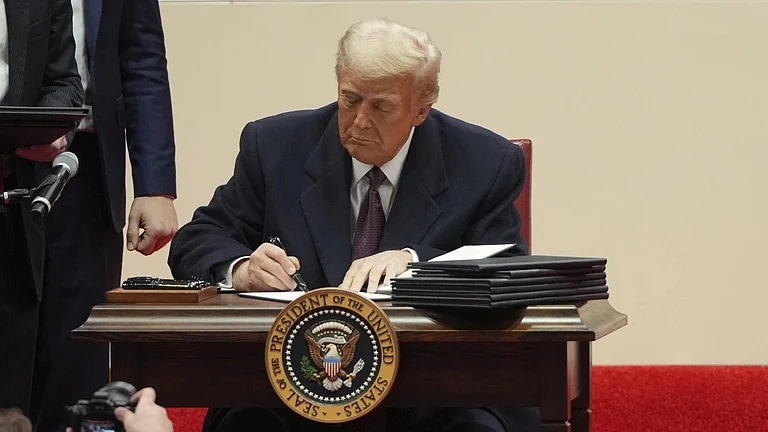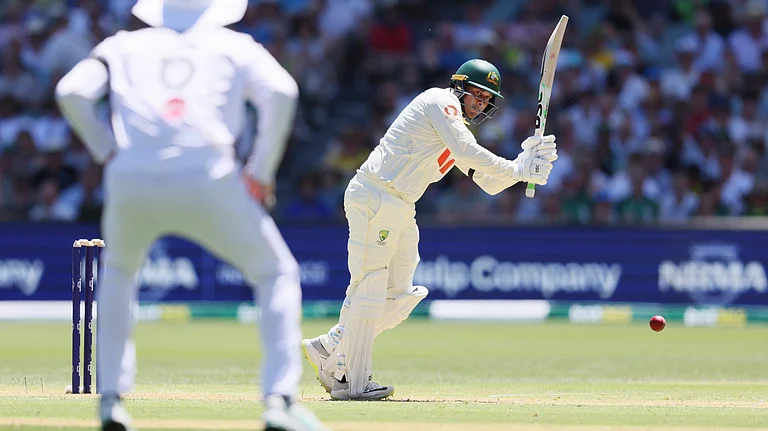Amid reluctance to opt for debt restructuring, Pakistan's interest expenses have shot up significantly to Rs 2.57 trillion during the first half of this fiscal year, which is equal to 65 per cent of the annual debt servicing budget, and is forcing the government to cut out its other expenses except those on defence, according to a media report.
Sources in the Ministry of Finance told The Express Tribune that during the July-December period of the current fiscal year, there was an alarming increase of 77 per cent in the cost of interest on the federal government debt stock. The fresh provisional details suggest that due to the precarious situation, there has been a cumulative reduction of 15 per cent in all other non-development expenditures, excluding defence. The development expenses were slashed by 50 per cent to create room for other expenses, according to government sources.
The finance ministry paid about Rs 2.57 trillion in interest costs, up by Rs 1.1 trillion or 77 per cent, according to the sources. For the current fiscal year, the government had budgeted Rs 3.95 trillion for interest expenses but 65 per cent of it has been consumed in just six months. Pakistan follows the July-June financial year. Amid the high cost of debt servicing, the Monetary Policy Committee of the central bank is also scheduled to meet on Monday to review the possibility of further increasing its interest rate to contain inflation and attract foreign inflows.
Earlier this month, Finance Minister Ishaq Dar said that the cost of debt servicing may increase to nearly Rs 5 trillion in this fiscal year -- more than half of this year's total budget of Rs 9.6 trillion. Despite the precarious situation, the finance ministry seems to be in no mood to appreciate the biggest challenge threatening the country's long-term viability. There is an urgent need to restructure domestic debt to create some fiscal space, which can strengthen Pakistan's case for foreign debt restructuring.
But the government has come up with yet another austerity committee as its solution to Pakistan's "financial challenges". According to sources, excluding military pensions and expenses on the armed forces development program, Rs 638 billion was spent on defence in six months -- Rs 118 billion or nearly 23 per cent more than last year. The annual stated defence budget is Rs 1.563 trillion and the six-month spending is in line with the allocation. With a net income of Rs 2.5 trillion, accumulative spending on debt servicing and defence jumped over Rs 3.2 trillion – 128 per cent or Rs 708 billion more than the government's net income -- suggesting that Pakistan will remain debt trapped because even though tax collection has increased, expenses are not being curtailed.
After wasting about four months trying to secure cash injections from other nations, Pakistan has finally decided to try and revive the IMF program again. Compared to the huge spending of Rs 3.2 trillion on debt servicing and defence, only Rs 147 billion was spent on development. The spending on development is Rs 141 billion or 49 per cent less than that in the previous fiscal year. All the other expenses of the government amounted to Rs 1.3 trillion, also down by Rs 225 billion or 15 per cent.
Under the IMF program, Pakistan has committed to convert the primary deficit, calculated after excluding interest payments, into a surplus of 0.2 per cent of GDP, down from last fiscal year's 3.6 per cent. As a result of uncontrolled spending, however, the government will miss the deficit target agreed upon with the IMF.
As per sources, provisional figures suggest that the federal budget deficit widened to nearly Rs 2.2 trillion in the first six months of the current fiscal year. The federal budget deficit -- the gap between expenses and revenues -- was equal to 2.5 per cent of the GDP. In nominal terms, the deficit was low compared to last year but has more effect due to the inflated size of the economy on the back of a 25 per cent inflation rate.
During the current fiscal year, the government's total expenditure shot up to nearly Rs 4.7 trillion -- 23 per cent or Rs 870 billion higher than the comparative period of last year. But the current expenditure of the government rose to over Rs 4.5 trillion -- an increase of 29 per cent or Rs 1 trillion compared to the same period a year ago. Gross revenues of the government increased to Rs 4.3 trillion, higher by Rs 656 billion or 18 per cent. The government transferred Rs 1.8 trillion to provinces as their share in federal taxes, which was 6 per cent higher than last year.
During the first six months, the Federal Board of Revenue's (FBR) tax collection remained at Rs 3.342 trillion, up by Rs 422 billion or 14.4 per cent. The six-month collection was short of the IMF target by Rs 170 billion. Non-tax revenues amounted to Rs 950 billion, up by Rs 234 billion or 33 per cent on the back of higher petroleum levy collection. After incorporating the cash surplus of Rs 177 billion achieved by the provincial governments, the overall deficit of the country stood at Rs 2 trillion or 2.4 per cent of the GDP. The overall primary balance was Rs 586 billion or 0.7% of the GDP. There was a 63 per cent reduction in the provincial surpluses compared to the same period a year ago, according to the Express Tribune report.


























